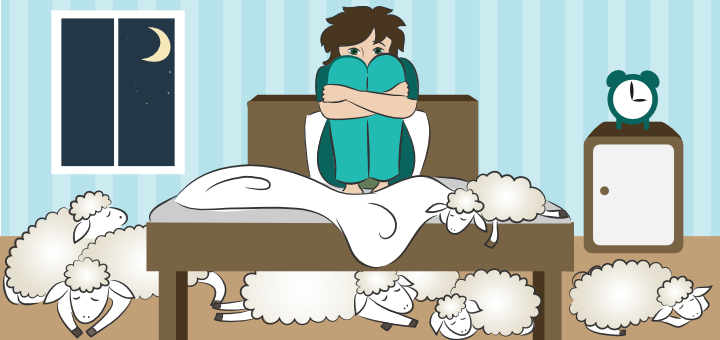Five kinds of sleep disturbances and how to identify them

Sleep impacts every aspect of our physiology, so it is not surprising that we always ask our private yoga students about the quality of their sleep, both in the initial consultation and subsequent sessions. But what questions should we ask? And what do we do with those answers? Let’s figure this out.
The first basic question about sleep that we usually lead with is “How’s your sleep?” which would result in a range of answers from “Great!” to “Terrible.” It might also be “Fine” or “OK”. What we really want to know is whether or not the sleep is performing its duty of physiological and mental restoration and reorganization, so we would often elaborate with “Do you wake up feeling refreshed?” If we get a sense that the student’s sleep is anything less than “great,” we would need to conduct further investigation.
There are different kinds of sleep disturbances that students might experience. Identifying which one it is can be helpful when selecting the proper tools for dealing with the disturbance.
First, we need to know which part of the sleep cycle is affected. We would ask: “Do you have trouble falling asleep or staying asleep? When do you wake up?” Five different scenarios are possible here.
1. Sleep deficit means that the student is chronically sleep deprived because she is not giving herself enough sleep opportunity (actual time spent in bed). In this situation, the main problem is usually the transition from waking activities to sleep – staying up late to finish up tasks, watching TV, and so on.
Questions to ask: What time do you go to bed? What time would you like to go to bed? What do you usually end up doing before bed? Do you have a transitioning routine that helps you prepare for bed?
2. Difficulty falling asleep (DFA) means lying in bed awake and unable to drift off. This usually indicates that the body and/or mind are not ready to go to bed. It can be linked to various physiological, psychological, and environmental factors.
Questions to ask: What do you do before bed? When you are lying there awake, is your body comfortable? What is the environment in your bedroom (temperature, light, noise, etc.) What’s going through your mind?
3. Mid-night awakening (MNA) means waking up in the middle of the night for an obvious (to go to the bathroom) or not obvious reason and then being unable to go back to sleep. Often, an increase in mental activity prevents the student from falling asleep again.
Questions to ask: Is there an obvious reason why you wake up? How often does it happen? Do you turn on the light when you wake up? Do you begin thinking about stuff? How long does it take you to fall back asleep? Do you stay in bed or get up? How do you feel about those awakenings?
4. Early morning awakening (EMA) means waking up at 4 a.m. or 5 a.m. and being unable to fall back asleep even when the student wishes to do so. This might lead some students to believe that they just don’t need as much sleep as other people, while in most situations, they do need that sleep; they just have a hard time getting it.
Questions to ask: Is there an obvious reason why you wake up? How often does it happen? How many hours do you stay asleep before you wake up? Is it bright in the room when you wake up? Do you begin thinking about stuff? Do you want to fall back asleep? Do you stay in bed or get up? How do you feel about those awakenings?
5. Sleep fragmentation means that instead of staying asleep for the duration of the night, the student has several brief awakenings but then is able to fall back asleep right away. This is a common side effect of consuming alcohol before bed, but it can also happen for other reasons.
Questions to ask: What do you do before bed? Do you consume alcohol? Do you take sleeping pills? What is the environment in your bedroom (temperature, light, noise, etc.)?
Asking those questions will give you a better idea of the student’s symptoms, habits and attitudes related to sleep and will move you a step closer to creating a plan to troubleshoot her sleep issues. ASANA PRACTICE IS VERY RARELY THE ANSWER when it comes to sleep issues, but luckily there are other yogic tools that work much better.

External factors that are messing up your sleep: Part 1








